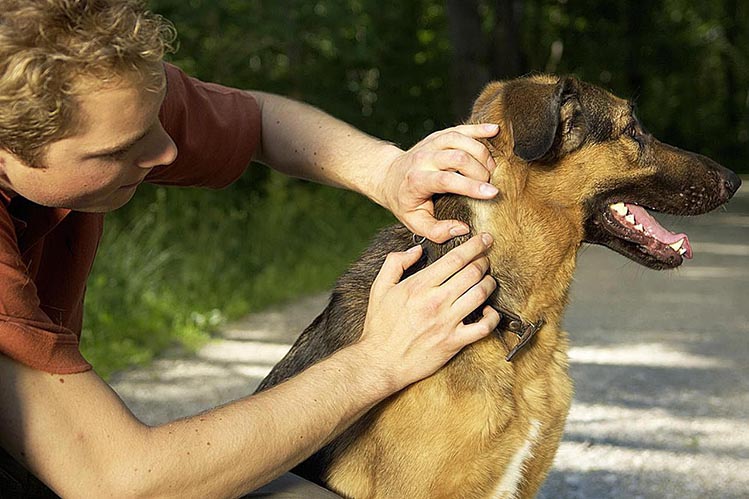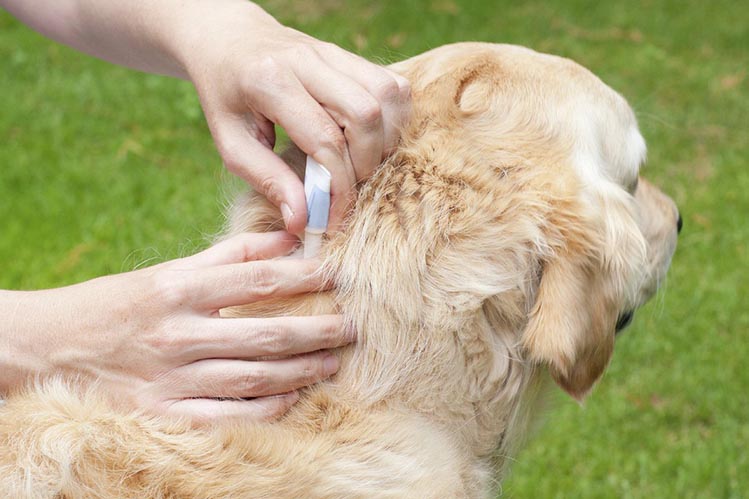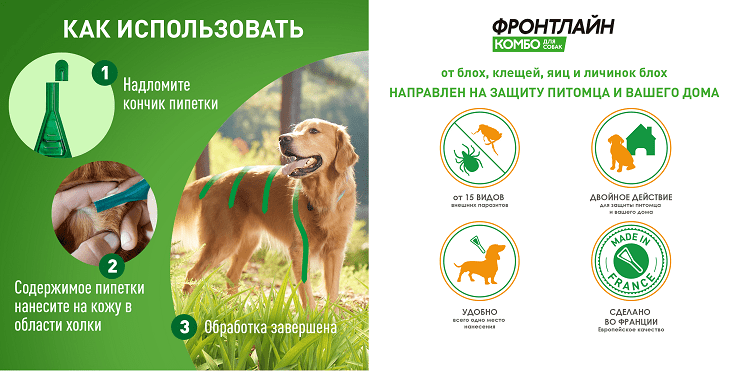
Treating your dog for fleas and ticks
Treatment of a dog from ectoparasites is a mandatory measure designed to protect the health of a pet. Bites of fleas, ticks and mosquitoes not only bring discomfort to the animal, but also create a risk of contracting infectious diseases.
There is a myth that it is enough to treat a pet from parasites 2 times a year: in spring and autumn. But in practice, pest control should be carried out throughout the year.
Fleas are active at any time, and a dog can become infected with them regardless of the season and temperature. Veterinarians recommend regularly treating a dog for ticks: from snow to snow. In cold weather, ticks fall asleep, but as soon as the average daily temperature exceeds + 5 ° C, they become active. In our climate, this can happen even in winter. There are known cases of bites and at temperatures below zero, for example, in the area of heating mains.
To keep your pet safe, you need to treat it regularly.
Ectoparasites include all parasites that live on the surface of the skin of animals and feed on blood. These tiny creatures are equipped with peculiar attachment organs: bristly paws and claws. With their help, they tenaciously grab onto the wool and move along the surface of the body.
Parasites can be divided into temporary and permanent. Temporary (ticks) after a bite unhook from the victim, and permanent (withers) use the animal as a home.
The most “popular” ectoparasites of dogs are fleas and ticks. It is the responsibility of every caring owner to protect their pet from them.

The bite brings discomfort. Bite sites can itch and hurt, causing stress to the animal.
Feeling discomfort, the dog combs the bites. Wounds become a gateway for bacterial infections.
A large number of bites leads to blood loss. Kittens, puppies, and debilitated animals may develop anemia.
The saliva of an ectoparasite may contain pathogens of infection and invasion. Each bite of an ectoparasite is a serious risk of infection.
Diseases after a bite develop very quickly. Sometimes the onset of symptoms lasts for several weeks, and sometimes it passes by an outbreak: within a few hours. If timely treatment is not started, the animal may die.
In order not to put your pet at risk and not doom yourself to significant expenses (for example, the treatment of piroplasmosis costs an average of 6 thousand rubles per day!), It is important to follow the parasite treatment schedule. Remember one of the most important principles of medicine (and veterinary medicine in particular): “It is easier to prevent a disease than to cure it”?

With the current level of the pet industry, protecting a pet from parasites is as easy as shelling pears. For this, a full range of protective equipment has been developed: shampoos, collars (Foresto), spot-on drops, chewable tablets (Frontline, Simparika, Nesgard). You can buy them at any pet store.
Most antiparasitic agents have a wide spectrum of action and provide protection not only against fleas and ticks, but also against mosquitoes, withers and other insects.
When treating a pet from parasites, strictly follow the instructions for use. Each tool is applied individually and has its own period of action. As soon as it ends, the processing must be repeated. If the dosage is incorrectly calculated or the frequency is violated, protection will be ineffective.
If your dog has not been treated for parasites or the protection period has expired, then returning home from a summer house or outdoor recreation, be sure to wash it with an antiparasitic shampoo. This will help to destroy the ectoparasites that the pet may have become infected with. And after that, provide further protection: with the help of drops, collars, sprays or tablets – you choose.
Antiparasitic drops are applied 2 days before washing or 2 days after it. Read the instructions carefully.

It is enough to use one reliable tool for constant protection. Each drug has its own characteristics and recommendations for compatibility. As the main methods of protection, it is better to use tablets or spot-on drops. Other means (sprays, collars) can be used as auxiliary in the warm season.
Before combining funds, be sure to consult a specialist, and carefully read the instructions before processing.
Before combining funds, be sure to consult a specialist, and carefully read the instructions before processing.
Be vigilant and take care of the health of your pets: they deserve it!
The article was written with the support of an expert: Mac Boris Vladimirovich, veterinarian and therapist at the Sputnik clinic.






